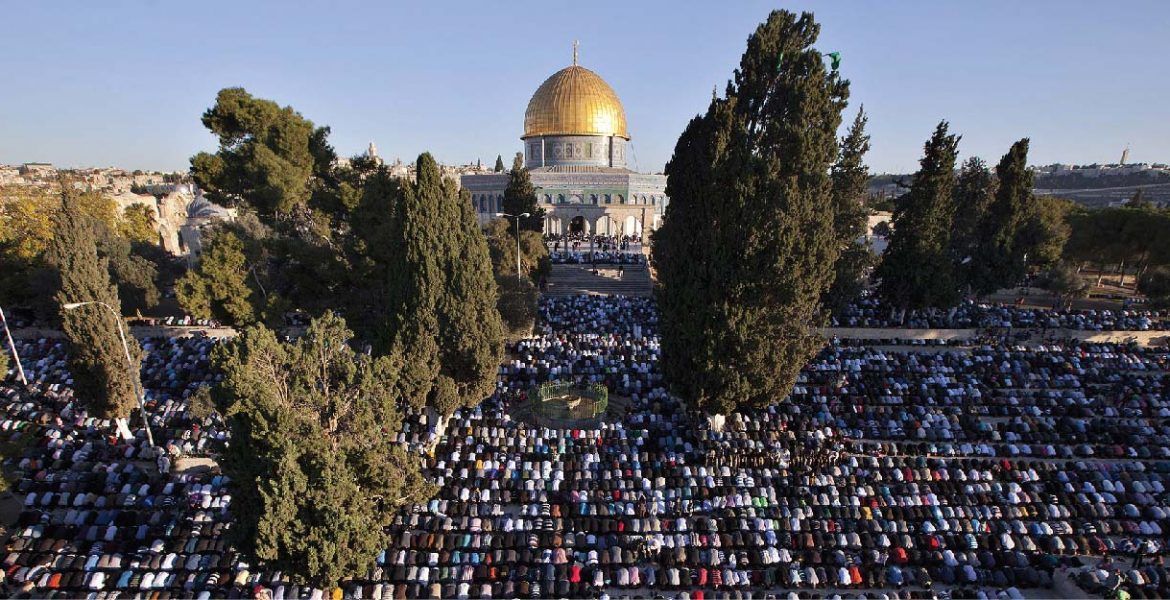Eid ul-Fitr is a day of great merriment. Muslims around the world celebrate Eid by getting together with their loved ones, preparing sweet delicacies, wearing new clothes, giving each other gifts, decorating their homes and going to the mosque to perform special congregational prayers. This year Eid ul-Fitr will most likely be observed on Saturday, July 18. It is celebrated on the first day of Shawwal, the tenth month of the Islamic lunar calendar. Many will be anxiously waiting for the announcement regarding the sighting of the new moon to begin the celebrations. The appearance of the new moon has in recent times become a focal point for many groups to showcase their differences in opinion. Some opting for astronomical calculations, some following Mecca, while the others believing in seeing the new moon in ones’ own country. Regardless of these differences, Eid celebrations are a three-day event and across the Muslim world celebrations seem synonymous with greetings and traditions based on prophetic customs passed down. After a month of fasting, the Eid lunch is the most anticipated meal of the day for Muslims. Across the Indian subcontinent the biryani takes centre stage. Eid is not only about the feast that precedes the fast but it’s also the time to bond with loved ones and seek blessing from elders.
However, these traditions are evolving. Eid is usually marked with at least, three days of holidays and in some countries even longer. With changing social customs, the time of holding on to tradition is giving way to the rise of self-interest. In most urban homes both spouses have professional careers and Eid is often seen as the long awaited break rather than an opportunity to meet up with family. I, like countless others, find this a period to escape from our traditions and venture to a foreign land.
Of course travelling during the last days of Ramadan and Eid have its challenges. It’s best to pick a country where fasting can be easily observed. Travelling to a predominantly Muslim region during this time is a fascinating experience. In many places, including the UAE, Morocco, Tunisia, Malaysia, Indonesia and Egypt, daily life changes dramatically during the month, thereby giving visitors a chance to see a whole new side to these regions. Like any holiday period, Ramadan affects regular business routine. Many venues operate with limited hours and staff. Also, note that most sights such as the museums, shows, and certain tours may be closed on the day of Eid. Therefore, confirm and book your travel itinerary in advance to avoid any disappointments. Ramadan is all about the nightly festivities and the traditions vary from region to region. In Morocco, streets come alive with light displays, music and sweets are offered at every intersection. The ambient ‘Khan el Khalil’ in Cairo is a great place for shopping. In many Muslim countries Iftar tents are set up and people flock around to break their fasts. They are often subsidised by the local municipality, offering cheap or free hygienic food. In the Gulf States, the Ramadan tents are a popular place to spend the night snacking, smoking shisha and playing games. Visiting such countries during this time provides both the fun of travelling and the ease to observe the fast. It’s also a great way to see cultural diversity among Muslim communities across the world. Going for Eid congregational prayer at the Al-Azhar mosque, Egypt or the Al-Aqsa in Jerusalem or Sheikh Lotfollah Mosque in Isfahan, Iran will undoubtedly be the most memorable part of your journey.
When the Prophet Muhammad (pbuh) arrived at the city of Madinah, he saw some of the locals celebrating on two explicit days. The Prophet asked the people about the nature of these celebrations; they said that these festivities were occasions from the time before the advent of Islam. It is believed that from then on the Prophet remarked that God has set two days for holidays. Those two holidays are Eid-ul-Fitr and Eid-ul-Adha which are celebrated by us today.
Some of the Middle Eastern favorites are: Jellab- A syrup made of grape molasses mixed with rose water and sugar, topped with ice and pine nuts. Amar al-Deen- A drink made out of dried apricot sheets soaked in water. Tamar Hindi is a tamarind based drink. Across South Asia, the Falooda is a popular choice.
Biryani, Mansaf and Kabsas make up an integral part of the Eid meal in Asia and the Middle East.
Couscous: A North African dish of granulated semolina, served with meat, chicken, fish or vegetables is a staple.
Kunafa is a sweet made from spun shredded wheat, filled with cream, cheese or nuts is popular in the Middle East. Atayef is famous in Egypt and the Levant. These are Arabic pancakes filled with cheese or nuts, and served with a sugary syrup or honey. Small, sweet dumplings made from butter, sugar, milk and flour are called Luqaimat in the Gulf. Awamat in the Levant is another Eid special. Jelabi and Sheer Khurma made with milk and vermicelli are popular in the Indian sub continent. Watalapum is a steamed carmel with coconut milk and jaggery is prepared by the Muslims of Sri Lanka.




